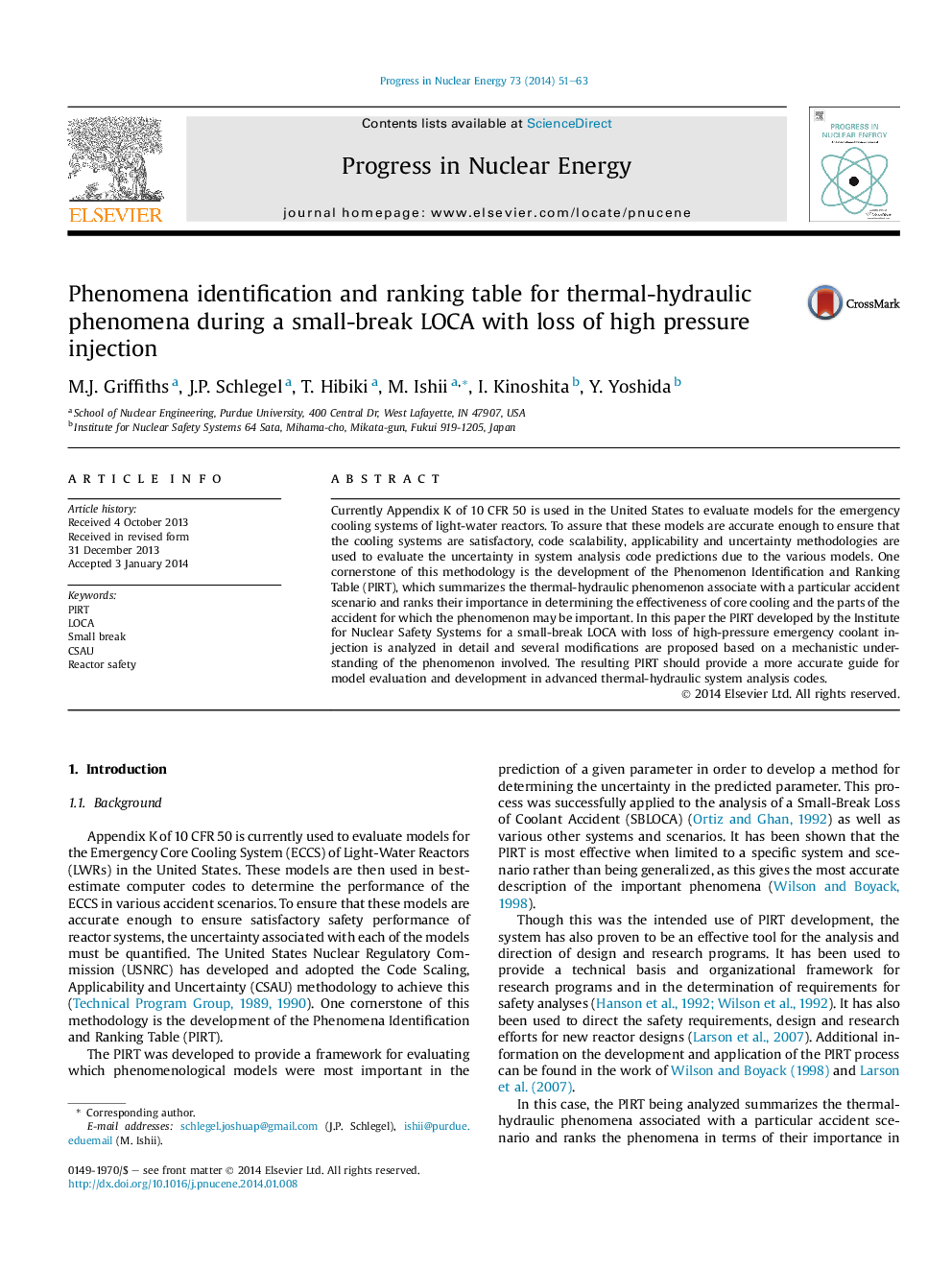| Article ID | Journal | Published Year | Pages | File Type |
|---|---|---|---|---|
| 1740706 | Progress in Nuclear Energy | 2014 | 13 Pages |
•PIRT is developed for a SBLOCA with loss of high-pressure injection in PWR.•Changes made to previous version based on mechanistic understanding of phenomena.•Result is a partial guide for directing future research in nuclear thermal-hydraulics.
Currently Appendix K of 10 CFR 50 is used in the United States to evaluate models for the emergency cooling systems of light-water reactors. To assure that these models are accurate enough to ensure that the cooling systems are satisfactory, code scalability, applicability and uncertainty methodologies are used to evaluate the uncertainty in system analysis code predictions due to the various models. One cornerstone of this methodology is the development of the Phenomenon Identification and Ranking Table (PIRT), which summarizes the thermal-hydraulic phenomenon associate with a particular accident scenario and ranks their importance in determining the effectiveness of core cooling and the parts of the accident for which the phenomenon may be important. In this paper the PIRT developed by the Institute for Nuclear Safety Systems for a small-break LOCA with loss of high-pressure emergency coolant injection is analyzed in detail and several modifications are proposed based on a mechanistic understanding of the phenomenon involved. The resulting PIRT should provide a more accurate guide for model evaluation and development in advanced thermal-hydraulic system analysis codes.
